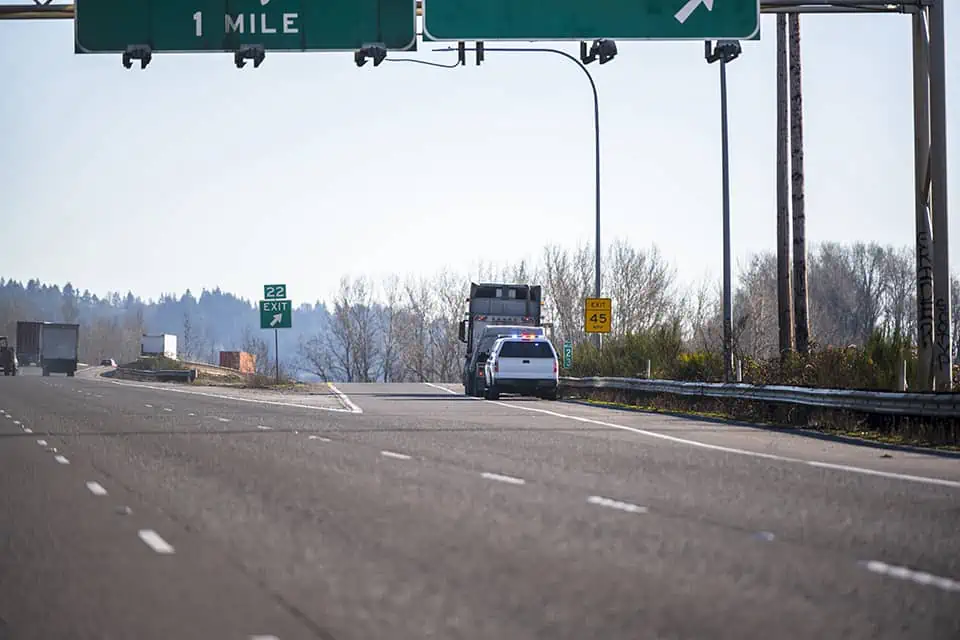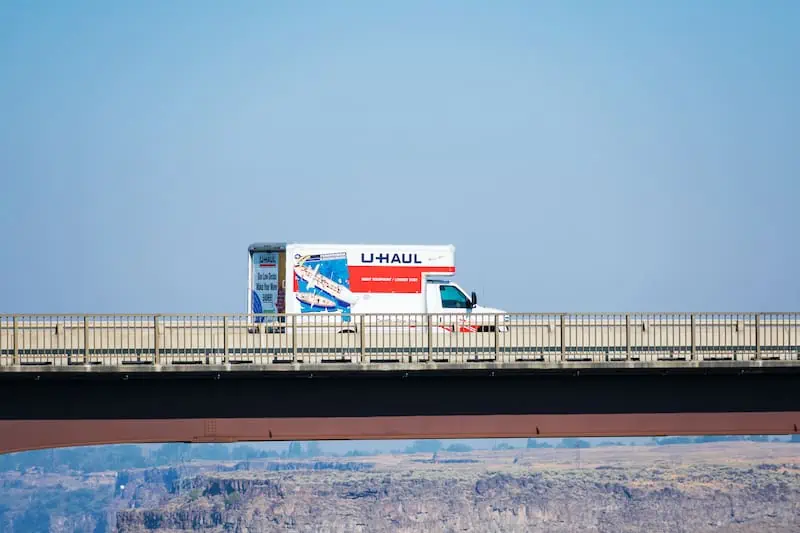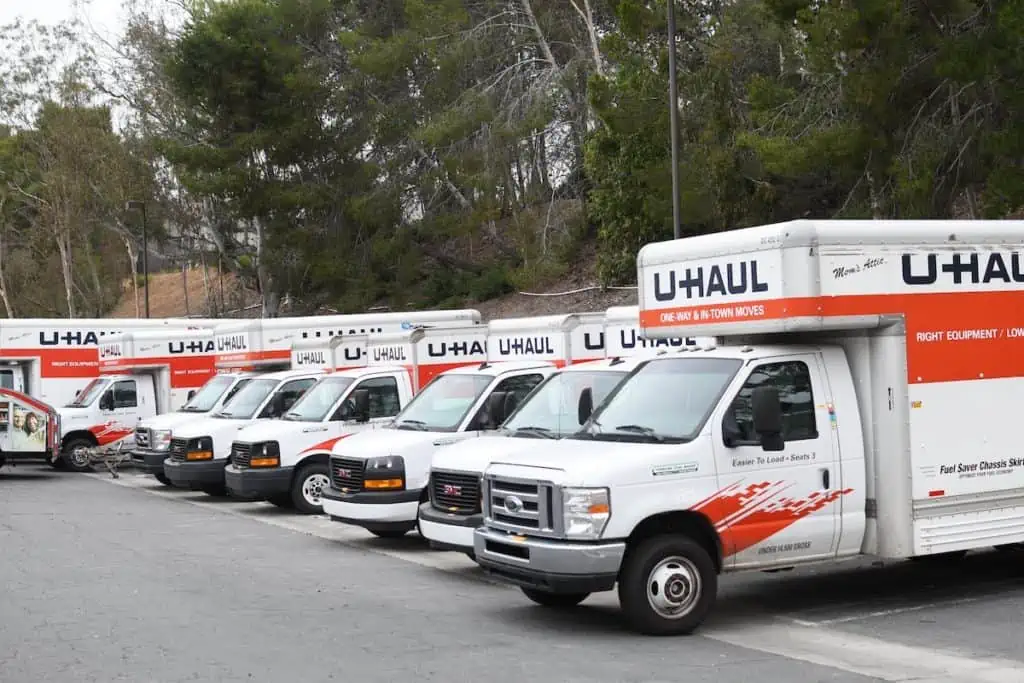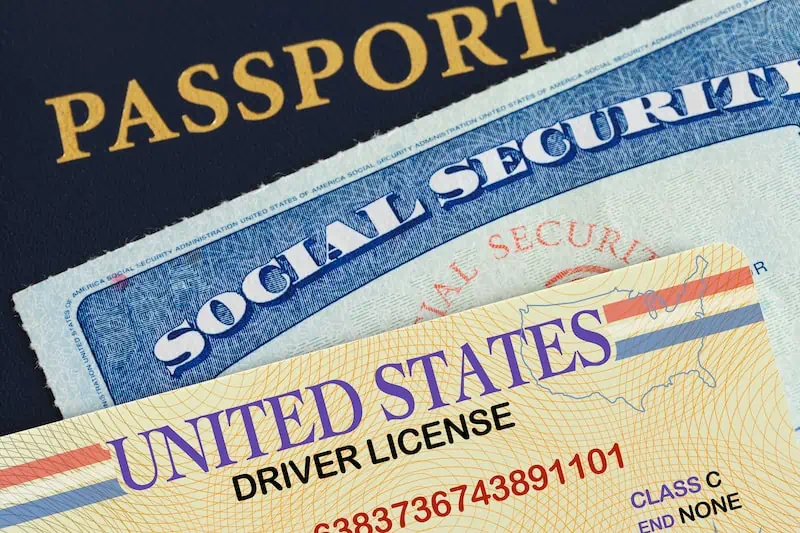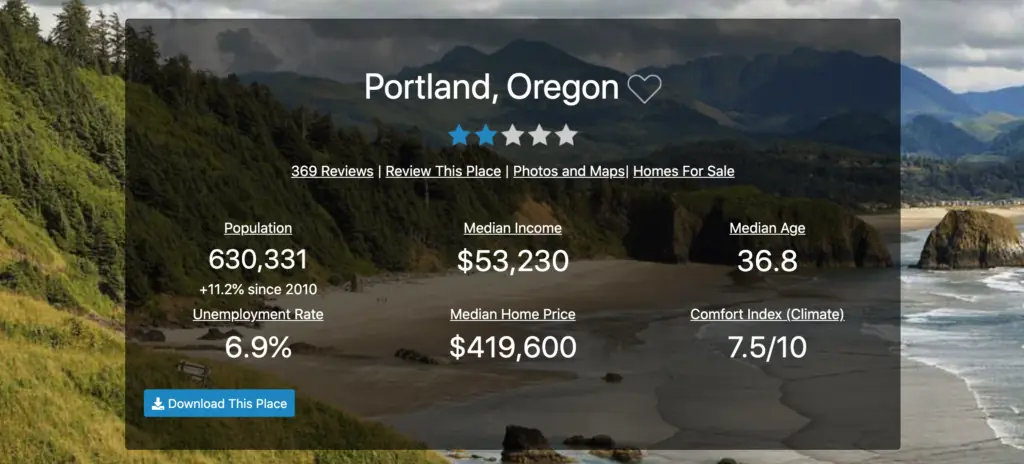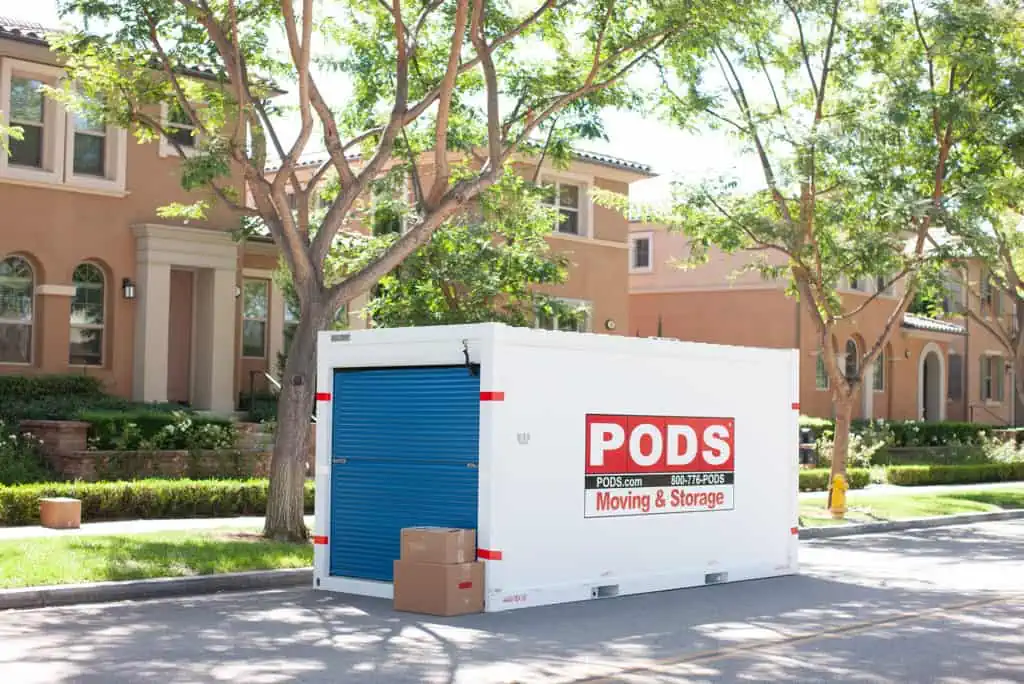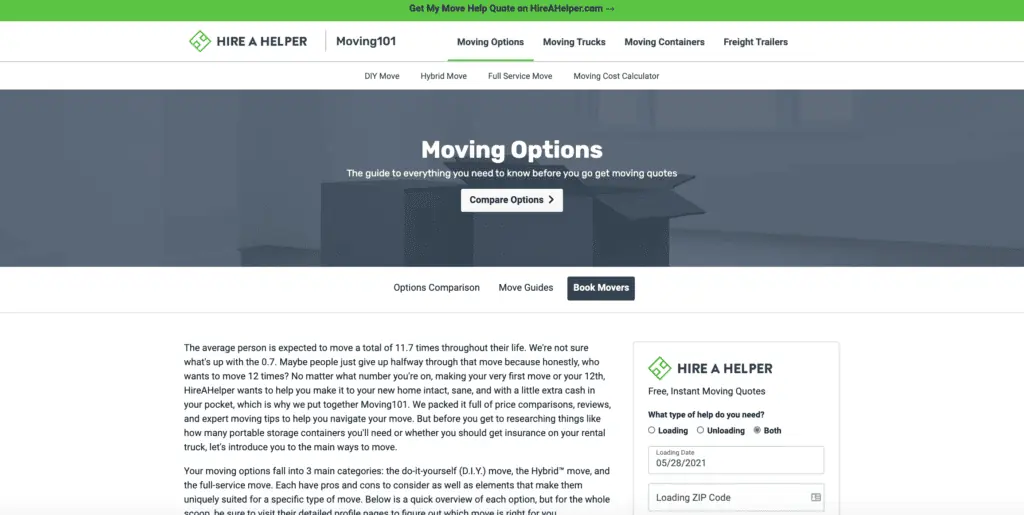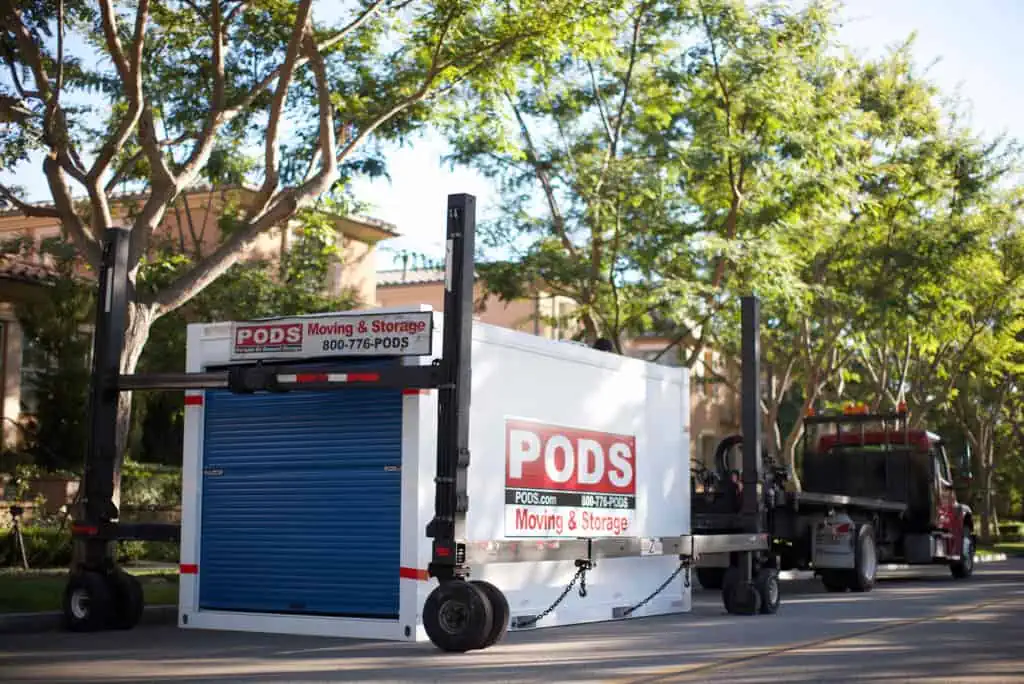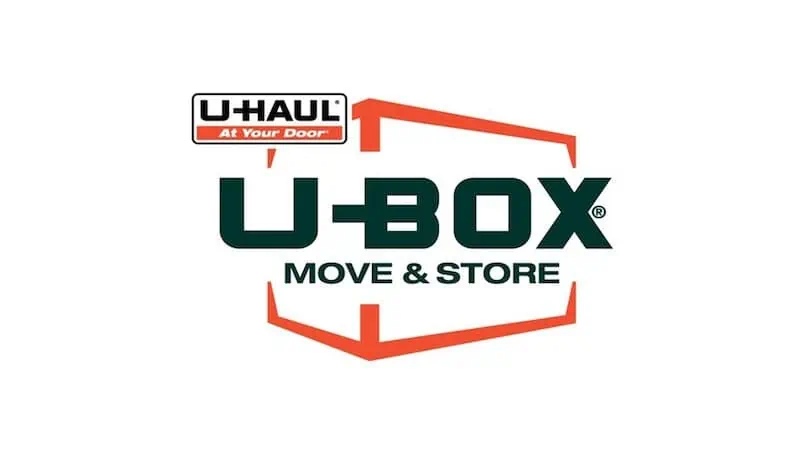You don’t really think about how to move across the country by yourself until you actually need to move across the country by yourself.
This was my story not long ago.
I had an opportunity fall into my lap, but moving across the country was part of the deal. While moving any distance takes time and planning, working out the logistics of a solo cross-country move in winter weather would require some real strategy. I would be driving across the northern part of the country from Idaho to Pennsylvania in April, plowing through late winter snows and other potential issues. And I’d be doing it alone.
As is typical of these kinds of adventures, not everything went smoothly. But now that I’m basically an expert in how to move across the country by yourself, here are my top tips for moving across the country alone.
How To Move Across the Country by Yourself
Weigh Your Moving Options Carefully
Step one — and probably the most important decision you’ll make during your move — is deciding how you’re going to move. There are four main options: full-service movers, long-distance moving companies, portable moving containers, and moving truck rentals. The key differences between these are cost, time, and the amount of work you’ll have to take on yourself.
Full-Service Movers
Full-service movers pack your things, load the truck, drive the truck, unload the truck, and unload your things. They pretty much do it all — and they charge accordingly. This is the most expensive option, and it often comes with a strict timeline, but it requires the least amount of work from you.
See prices for local moving labor. Read real customer reviews. Easily book your help online.
Long Distance Moving Companies
If you need some more hands-on help, some long-distance moving companies are still pretty affordable compared to full-service movers. While they don’t take care of every aspect of your move, they do take care of the driving for you. Typically, this means you load your stuff into a truck with other customers’ things, but it’s a good option if you don’t feel up to navigating interstate highways in a massive rental truck.
Portable Moving Containers
Portable moving containers, like the ones from PODS, are a sort of hybrid moving option. A container is delivered to your driveway, where you pack and load it yourself. Then it gets picked up and transported to your new home, where you unload and unpack it again. This service costs less than full-service movers and more than a moving truck. One of the big perks is that you don’t have to drive a big rental truck when you use moving containers.
Moving Truck Rental
Renting a moving truck is usually the cheapest option, but you’re responsible for all the packing, loading, driving, unloading, and unpacking. If you opt for a rental truck, you need one that is reliable the whole way across the country, and that gets the best fuel economy you can expect from a large vehicle. You will save a lot of money driving your own truck versus a full-service option, but it will still cost roughly $1,800 after expenses, on average.
If you’re wondering, “How can I move across the country with little money?” so was I. That’s why I decided to rent a moving truck instead of hiring full-service movers. However, I did pay for moving help for some of the heavy living.
How much money should I have before moving cross-country alone? On average, moving across the country can cost anywhere from around $2,400 to $15,000. But it’s a good idea to set aside some extra money for incidentals.
Read Customer Reviews Before Choosing Your Rental Truck
It’s important to do your due diligence before renting a moving truck. I chose to rent from Penske. They tend to have newer trucks and have a reputation for being reliable and comfortable. I had a sense this was true, thanks to my package delivery days when we had to rent delivery vehicles whenever our own trucks were in for repairs.
Use a Moving Calculator to Estimate What Size Truck You’ll Need
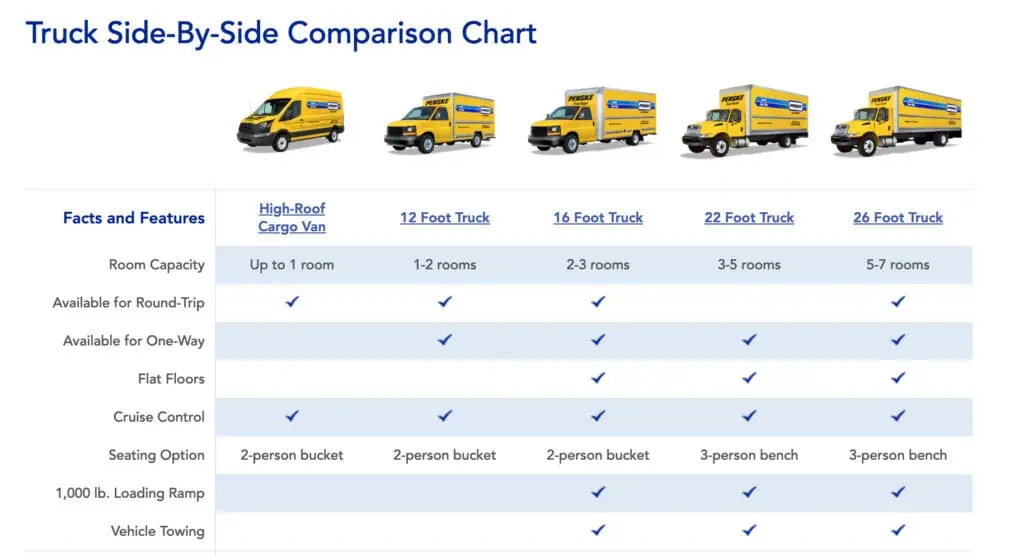
You ultimately need enough room, but you don’t want to pay for more than you need. There are some handy charts and calculators online made by truck companies like Budget and Penske’s Truck Wizard that will estimate what size truck you’ll need based on the items you select for your move (e.g., bookcase, hutch, different sized boxes).
In my case, the most important things were in my office, like a desk, books, computers, and other supplies. About 1 to 2 rooms worth of stuff. This meant a small truck was fine for me, which would also get better mileage by not being weighed down. Huge, since I’m the one paying for the gas!
Hire Movers If You Need Help
Lastly, since I was by myself at one end, and then only had my cousin to help me unload at the other, I hired pros to do the heavy lifting part for just a couple hundred bucks. This was much more affordable than hiring a van line for thousands of dollars, which I didn’t have time to wait around for anyway.
“Simply know that the police will be watching, so be sure to have all of your rental paperwork in order, and don’t carry anything illegal when you’re moving across the country.”
The person I got on the phone at HireAHelper was invaluable from start to finish, finding me the professional movers for both ends of my journey in maybe 15 minutes. The movers packed my truck way better than I would have by myself, which ensured that nothing would slide around or get damaged.
How can I move across the country on my own? No matter how strong you are, you’re probably going to need some help lifting heavy furniture and loading your truck. It’s a good idea to hire professional movers for this part of the process.
Check Out the Weather Forecast
Looking back, I wish I had checked the forecast for my route. I was going to be driving across the northern United States in early spring and snow was a real possibility—one that became a reality in Utah, Wyoming, Illinois, and Pennsylvania.
In Utah, the snow was almost blinding for over 150 miles!
There are different apps and websites where you can do this. I suggest using Morecast to get the weather outlook for each leg of your trip.
What this ultimately meant to my move was a slower drive and a later arrival. Another unusual factor you don’t really read about while moving in those flyover states: wind. And with a moving truck that wasn’t loaded with overly heavy things, it was a larger factor than I had imagined.
If I had a redo, I’d definitely check the weather report religiously to get the weather outlook for each leg of my trip.
Use a Navigation App to Avoid Traffic and Road Construction
For the most part, I let Google pick the fastest route across the country. The good thing about that is that Google Maps knows how to bypass rush hour in cities I was not familiar with.
Orange cones, narrow lanes, and slow-speed zones were all things I encountered along the way. Having alternate routes mapped out was seriously a lifesaver for me a couple of times on my trip.
A caveat is that Google didn’t know what kind of vehicle I was driving, so for your own trip, you should be aware of things like low-clearance bridges and tunnels.
Plan Your Accommodations in Advance
Navigation apps are pretty good about predicting when you’ll arrive at your destination, so planning accommodation in advance is totally doable. It’s not something I personally did, but definitely something I would recommend.
I decided to go with the reservationless trip and risk not being able to find a place to stop for the night. Since I was traveling alone, I figured, at worst, I could sleep in the cab of the truck for a few hours. As you might have predicted, this actually turned into an issue.
“On average, moving across the country can cost anywhere from around $2,400 to $15,000. But it’s a good idea to set aside some extra money for incidentals.”
As I passed the Chicago area, there suddenly were no vacant motels for a long time. I finally spotted a Motel 6 sign and pulled off the exit to find a large concrete structure I was convinced had once been a bunker or a hospital.
The rest of the trip, I was able to find reasonable lodging wherever I went, but I was close to cab-resting a couple of times. Next time, if there is one, I’ll plan everything out to the last detail.
See prices for local moving labor. Read real customer reviews. Easily book your help online.
Eat and Drink the Right Things at the Right Times
It’s really important to eat, drink, and stay alert when moving across the country alone. But driving by yourself for a long time makes that tough to do. Here are some things I did that helped me stay in tip-top driving shape during my cross-country move:
- Grocery shop daily: All that road food is not great, so I grabbed some healthy snacks at a grocery store each morning along the way and kept them in a small cooler in the passenger seat beside me.
- Drink wisely: I needed to stay hydrated but didn’t want to have to stop too often to empty my bladder. On the other hand, bathroom breaks offered a chance to stretch and walk around, so I eventually found the right balance of drinking only every few hours and not being afraid of semi-frequent pit stops.
- Know your caffeine tolerance: Caffeine helps keep me awake but it’s also a diuretic and is hard on my stomach. I made sure not to overdo it on the coffee.
 Have Playlists and Audiobooks Downloaded Before You Get on the Road
Have Playlists and Audiobooks Downloaded Before You Get on the Road
Silence is not good for keeping awake and paying attention, and neither is soothing music. I rolled down the windows when possible and listened to talk radio or audio books. These were all things that kept my brain engaged. I also had to pre-download listening materials, knowing there were big sections of land with no radio reception.
Finally, I had a hands-free way to talk on the phone to stay in touch with people along the way. In some states, hands-free phones are the law, but in all of them, it’s a good idea to use the feature.
Follow the Law and Be Prepared To Get Pulled Over
As I traveled across Illinois, I was pulled over by a state trooper. Then it happened again. Not because I was doing anything wrong in particular, but because I was driving a moving truck — apparently, it’s quite common for drug runners to use moving trucks filled with junk to disguise their shipments.
What I learned is that even the most minor traffic violation in a moving truck might get you pulled over. Since it quickly became clear to officers that I was not a drug smuggler, they let me go. But it still caused a delay, which wasn’t great.
Simply know that the police will be watching, so be sure to have all of your rental paperwork in order, and don’t carry anything illegal when you’re moving across the country. Even if it is legal in the state you’re moving to (like marijuana if you’re moving to California, for instance), you will get in trouble.
Roundup: Tips for Moving Across the Country Alone
Once I arrived at my destination, everything was fine. The best news: I got there in time to meet my unloading movers!
In the end, the move was more about the journey than the destination. I am now back in Idaho, but I learned a lot along the way. Here’s a summary of the tips I discovered for moving across the country alone:
- Choose the right moving option (and read reviews)
- Hire help if you need it
- Check the weather in advance
- Plan your route and accommodations
- Eat, drink, and stay alert (and don’t drink too much coffee)
- Have music and audiobooks on the ready
- Follow the law and drive carefully
Basically, have a plan but stay flexible. It will turn your trip into something you will never forget.
You Don’t Have To Do It All Yourself
Moving across the country by yourself is a challenge, and one not all people are up to. There are long-distance moving companies that can take care of everything transportation-related: booking a truck, drivers, gas, etc. You pack, and they’ll get your stuff safely to your new home at a fraction of the price of traditional moving companies.



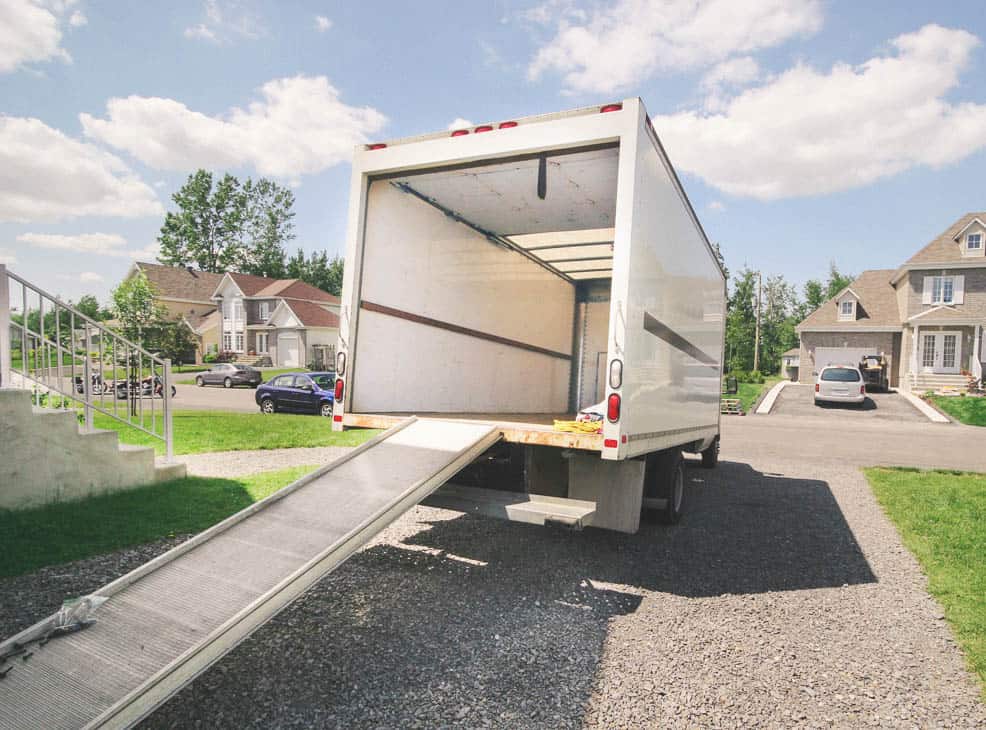



 Have Playlists and Audiobooks Downloaded Before You Get on the Road
Have Playlists and Audiobooks Downloaded Before You Get on the Road